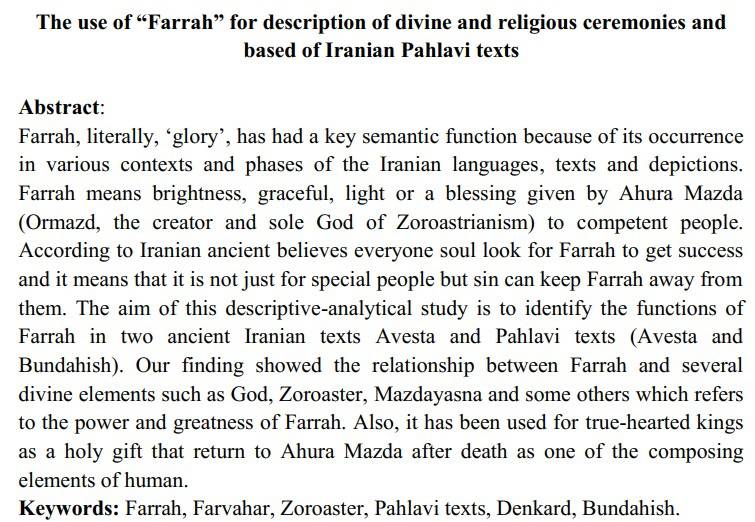دینا فایل / The use of “Farrah” for description of divine and religious ceremonies and based of Iranian Pahlavi texts
The use of “Farrah” for description of divine and religious ceremonies and based of Iranian Pahlavi texts
The use of “Farrah” for description of divine and religious ceremonies and based of Iranian Pahlavi texts

Abstract : Farrah, literally, ‘glory’, has had a key semantic function because of its occurrence in various contexts and phases of the Iranian languages, texts and depictions. Farrah means brightness, graceful, light or a blessing given by Ahura Mazda (Ormazd, the creator and sole God of Zoroastrianism) to competent people. According to Iranian ancient believes everyone soul look for Farrah to get success and it means that it is not just for special people but sin can keep Farrah away from them. The aim of this descriptive-analytical study is to identify the functions of Farrah in two ancient Iranian texts Avesta and Pahlavi texts (Avesta and Bundahish). Our finding showed the relationship between Farrah and several divine elements such as God, Zoroaster, Mazdayasna and some others which refers to the power and greatness of Farrah. Also, it
Farrah, Farvahar, Zoroaster, Pahlavi texts, Denkard, Bundahish